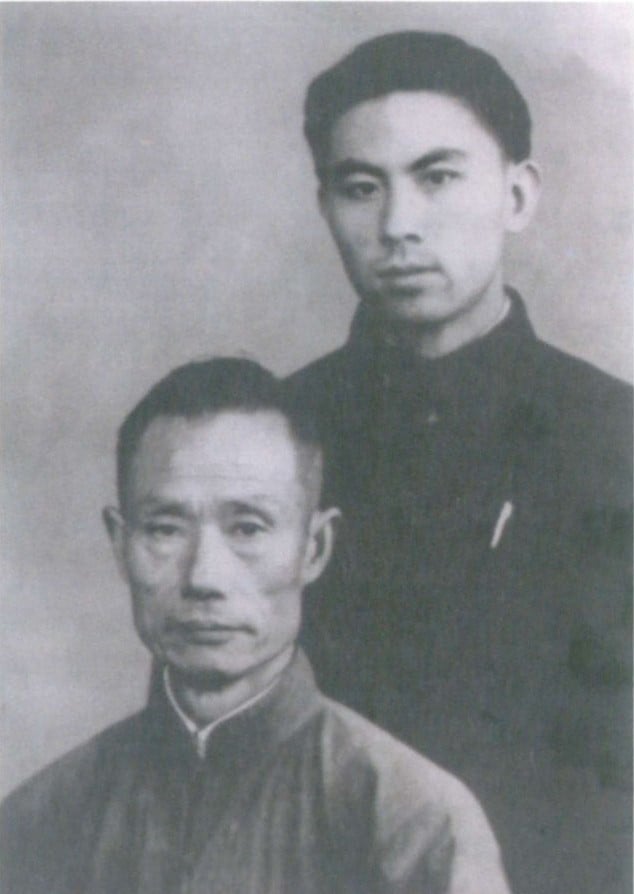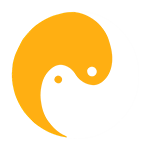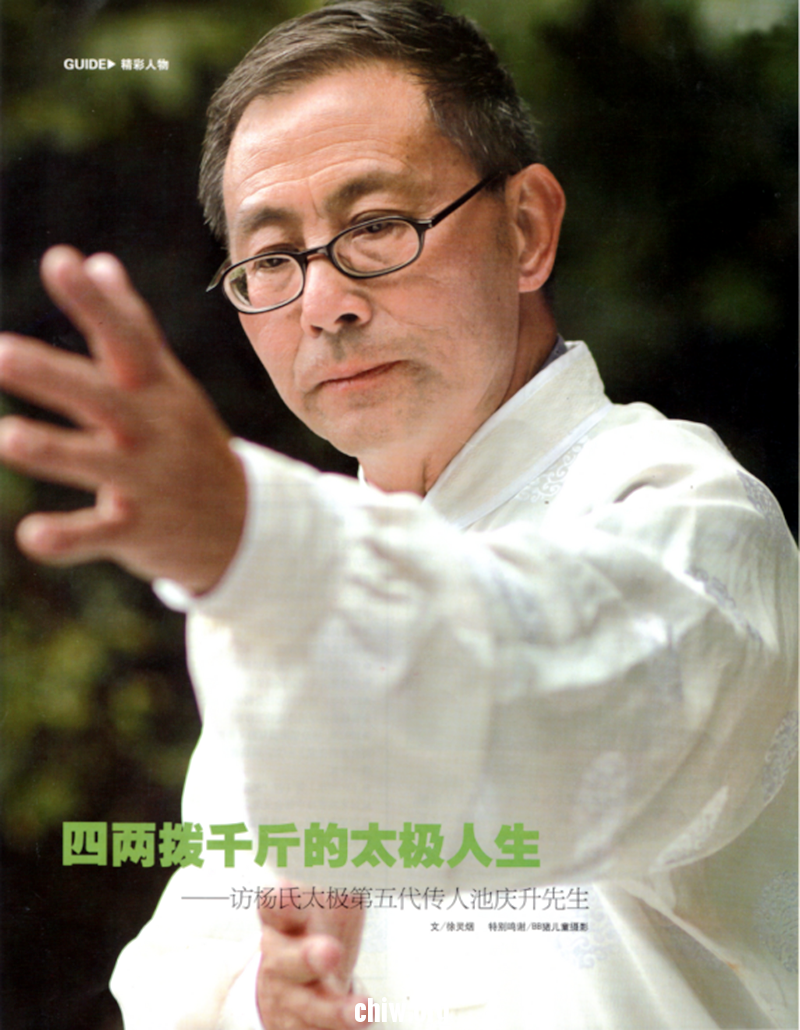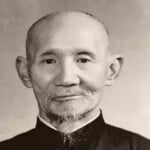“Seeking straightness within curves, storing before releasing… a mere four ounces can move a thousand pounds.” This concept of “four ounces deflect a thousand pounds” is the core principle of Taijiquan, and it is the ultimate state pursued by numerous Taiji masters throughout history. For Chi Qingsheng, this idea also embodies great wisdom in life. With softness overcoming hardness, borrowing the opponent’s force, and using intent rather than force, each principle aligns with his personal philosophy and life pursuit. Achieving great usefulness through “non-action (Wu-Wei),” which precisely represents Chi Qingsheng’s kindness and calmness of “giving what is needed and putting others before oneself.” This, of course, is also the character charm bestowed on him by the cultural connotation of Taijiquan. All of these originated from the father-son-like relationship between Chi Qingsheng and his master, Mr. Gu Lisheng, 54 years ago.
𝗥𝗲𝗻𝗼𝘄𝗻𝗲𝗱 𝗧𝗲𝗮𝗰𝗵𝗲𝗿 𝗮𝗻𝗱 𝗗𝗲𝘃𝗼𝘁𝗲𝗱 𝗦𝘁𝘂𝗱𝗲𝗻𝘁, 𝗔 𝗟𝗶𝗳𝗲𝘁𝗶𝗺𝗲 𝗼𝗳 𝗖𝗼𝗻𝗻𝗲𝗰𝘁𝗶𝗼𝗻 𝘁𝗵𝗿𝗼𝘂𝗴𝗵 𝗪𝗶𝗻𝗱 𝗮𝗻𝗱 𝗥𝗮𝗶𝗻.
In the spring of 1948, Chi Qingsheng was born into a well-off family in Guiyang City. His parents jointly operated a sizable general store. Not long after the Liberation, an older man named Gu Lisheng and his family rented the storefront beneath the Chi family’s home. He opened the then-unknown “Gu Lisheng Trauma Clinic,” starting a deep relationship with the Chi family.
Gu Lisheng, also known as Lu Ping, was a famous Taijiquan master in the Southwest. Together with his brothers Gu Ruzhang and Gu Jingzhang (famous external style martial arts masters), they were known as the “Three Gu of the Southwest” in the martial arts world. Gu Lisheng studied medicine with his maternal uncle from a young age, and in his teenage years, he learned Taiji Gong Fu from Yang Lu Chan’s direct grandsons, Yang Shaohou and Yang Chengfu. After graduation, he drifted around due to the Japanese invasion and finally settled in Guiyang. After the Liberation, Gu Lisheng started teaching students for free to better promote and inherit the Yang family Taiji. He did not charge any fees, only intending to pass on the essence of Chinese martial arts. This spirit of Gu Lisheng profoundly influenced Chi Qingsheng.

In 1956, when Chi Qingsheng was almost 9 years old, his family’s general store was nationalized in the process of merging public and private enterprises. His father went from being the owner of a general store to the manager of a state-owned supply and marketing cooperative, and his mother was also assigned to work at a branch in the Baiyun District, far from the city center of Guiyang. At that time, 9-year-old Chi Qingsheng was attending primary school, and his parents were too busy with work to take care of him. Because of his good relationship with Gu Lisheng, who lived downstairs, he formally became a student of Gu Lisheng.
Gu Lisheng treated Chi Qingsheng like his own son, strictly instructing him in his studies while being extremely caring in life. Aside from attending school and sleeping, Chi Qingsheng spent the rest of his time with his teacher. His memories of that time are vivid and fresh. Every day after school and homework, Chi Qingsheng would help in his teacher’s medicine shop, from grinding and preparing herbal medicine to reading medical books, memorizing prescriptions, and learning massage techniques. Gu Lisheng explained everything patiently and in detail. Every night after dinner, Gu Lisheng would take young Qingsheng to the nearby Lujiatun (now Guiyang Medical School) to teach him Yang family Taijiquan, day after day, year after year. The teacher always explained things gradually, from simple to complex, without holding back, so Chi Qingsheng progressed quickly. After learning the Yang-style Taijiquan big frame 108 movements, he also mastered Yang family Taiji Long Fist (Taiji Chang Quan), small frame Taijiquan, saber, sword, spear, pole, pushing hands, free hands (San Shou), and other secrets transmission of Yang family Taiji. From then on, Taiji accompanied Chi Qingsheng throughout his long life. When talking to the reporter about his youth, Chi Qingsheng once fell into deep thought. The sun shone through the mottled shadows of the trees onto his disciples practicing martial arts and playing with swords, perhaps reminding him of the days when he was with his master.
In addition to his superb martial arts skills, GM Gu Lisheng also had excellent medical skills, saving countless lives on the brink of death. Speaking of this, Chi Qingsheng said with deep admiration but also regret, “Master Gu’s medical skills were superb, and few people can match him today. Unfortunately, I was still young at that time. What I could learn and remember was limited, and I was obsessed with martial arts, so I only mastered a bit of the basics. Now, apart from massage, which I can still use, the rest is just theoretical knowledge.”
𝗡𝗼𝘁 𝗰𝗼𝗻𝗰𝗲𝗿𝗻𝗶𝗻𝗴 𝗼𝗻𝗲𝘀𝗲𝗹𝗳 𝘄𝗶𝘁𝗵 𝗴𝗮𝗶𝗻𝘀 𝗼𝗿 𝗹𝗼𝘀𝘀𝗲𝘀, 𝗿𝗲𝗮𝗹𝗶𝘇𝗶𝗻𝗴 𝘁𝗵𝗲 𝗽𝗿𝗶𝗻𝗰𝗶𝗽𝗹𝗲𝘀 𝗮𝗻𝗱 𝘁𝗵𝗲 𝗗𝗮𝗼
“Taiji is a treasure of traditional Chinese culture. It not only has distinctive exercise characteristics such as being upright with alignment, light and agile, but it also incorporates the traditional philosophical concepts of principles and Dao of the Chinese nation, allowing people to practice with a peaceful mind and a calm spirit, thus achieving the goal of keeping away from diseases and strengthening the body,” said Chi Qingsheng, expressing his understanding and insights about Taiji.
Through many years of studying Taijiquan, he found that martial arts are about enlightenment. Every renowned martial artist would not only inherit the skills of their master but also continually improve and perfect them during their own practice. However, most martial artists focus on improving their martial skills and tend to emphasize hands-on teaching during the transmission process. As a result, only some classical martial arts have been preserved, and even if they were, most of them only exist in form without meaning. This makes later learners often take a long detour during their learning process; some even stray into harm’s way, causing harm to themselves. Moreover, in the process of centuries-old martial arts inheritance, due to the lack of systematic summarization by famous martial artists, some unique martial arts techniques have been lost, and people can only imagine their former glory based on records. These are all treasures of the Chinese nation, which urgently need systematic and comprehensive organization and summarization in order to be passed down for a long time.
Under this concept, and out of sorrow for the fate of Master Gu’s family and respect for his teacher, Chi Qingsheng, who was approaching middle age, began to consider establishing the “Yang Family Taijiquan Research Association”. Encouraged by his senior martial brother and the Vice Chairman of the Guizhou Martial Arts Association, Liu Derong, after years of preparation and planning, Chi Qingsheng began to apply for the establishment of the “Taijiquan Research Association” in 1997. However, just at that time, the country began to control the establishment of various civil organizations, and the establishment of the research association was repeatedly shelved. Chi Qingsheng also went through a long wait, but for the martial arts master, it was just a series of tempering and practice. “The sharpness of a precious sword comes from sharpening, and the fragrance of plum blossoms comes from the bitter cold.” Two years later, the “Yang Family Taijiquan Research Association of Guiyang Martial Arts Organization” was officially established. Chi Qingsheng could organize the teachings of Master Gu’s lifetime into systematic classical martial arts, and he could finally comfort the spirit of his deceased master.
The establishment of the research association plunged Chi Qingsheng into a busier state. At that time, he had not yet retired. He often went to work during the day and taught his disciples at night. On weekends, he would ride his bicycle through the streets and alleys of Guiyang, rushing from one teaching point to another. Regardless of the snowing winter or the scorching summer heat, you could see Master Chi at Qianling Park, People’s Square, etc. After retiring in 2008, Chi Qingsheng devoted himself to the teaching and research of Taijiquan. All of his teachings were voluntary services for students without ever receiving a reward. Whether young or old, as long as they wanted to learn Taijiquan, Master Chi never refused. Over the years, Chi Qingsheng has had thousands of students (in the parks) scattered all over the country. Many students started teaching after they finished learning, fulfilling Master Chi’s wish to pass on Taiji.
Over the years, through teaching and learning, Chi Qingsheng and his students have benefited a lot and achieved fruitful results. Chi Qingsheng systematically summarized and concluded the essence of Taijiquan and the training sets taught by GM. Gu, which included the Yang Family Big Frame Taijiquan 108 Forms; Yang Style Taiji Long Fist First and Second Routes; Yang Family Taijiquan Small Frame; Yang Style Taijiquan 51 Movements; Yang Family Taijiquan Active Step; Yang Family Taiji Sword, Saber, Spear, Sticky Pole, and Pushing Hands, especially the Yang Family Taiji Internal Power Practice Eight Methods (Lian Gong Ba Fa) summarized in simple and understandable language, expressing the Taiji breathing (Tu-Na) and Qi circulating methods and meridian practice in clear and concise language, making it clear to the practitioners at a glance. His article “Discussion on the ‘Eight-Character Method’ of Practicing Taijiquan” even won the third prize at the International Taijiquan Exchange Conference Summit Forum, a rare honor in the Guizhou Taijiquan community. His students also achieved great success, winning many international awards. In the face of honor, Master Chi was not surprised or proud but still carried out his mission with an ordinary heart and a modest contribution. He said that it was his responsibility and mission.
The sun had just risen, and Chi Qingsheng had already finished his training on the lush peak of Qianling Mountain and was guiding his students’ forms exercise. The calm and composed Chi Qingsheng didn’t have the long beard and white eyebrows common to martial arts masters. The pair of glasses he wore made him seem a bit weak, but who could imagine that such a modest old man not only had extraordinary skills but also had a passion that did not belong to his age, harboring the ambition and determination to pass on traditional Chinese martial arts, tirelessly working towards his own ideal.


